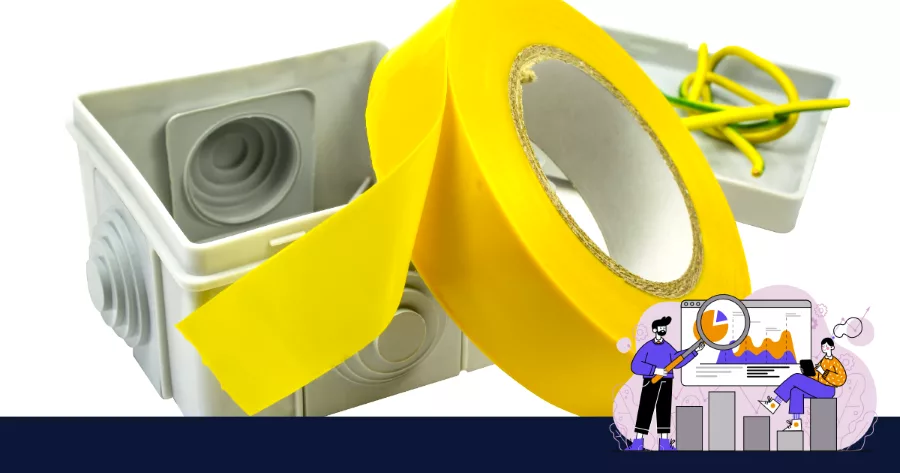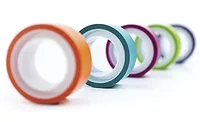Three Trends Shaping Pressure-Sensitive Adhesive Market Growth

Image courtesy of Global Market Insights, Inc.
Opportunities created by rising infrastructure initiatives, the booming super and hypercar sectors, and consumer electronics sales are likely to fuel the pressure-sensitive adhesives market size over 2023-2032. Infrastructure development spending has become a go-to solution for many countries as they work towards stimulating their economic recovery in a post-pandemic world. These initiatives are subsequently channelling a notable amount of capital towards pressure-sensitive adhesives from construction projects. Revenues are also likely to be spurred by the expanding food and beverage sector, which is making increasing efforts towards sustainability and eco friendliness.
According to a recent study by Global Market Insights Inc., the pressure-sensitive adhesives market is likely to surpass a valuation of USD 15.4 billion by 2032. Rising incorporation of tapes and adhesives in the automotive sector, expanding product demand from the packaging market, and increasing investments towards medical industry consolidation are expected to augment market outlook.
Below are some of the key trends outlining the pressure-sensitive adhesives industry outlook through 2032.
1. Growing Number of Mega-Construction Projects in Europe
Pressure-sensitive adhesives are extensively used as an interior bonding solution across both residential and commercial buildings. Pressure-sensitive tapes are relatively easy to use and provide strength, quality, and durability for the bonding materials used in the interior surfaces of buildings.
In terms of COVID-19 impact, Europe was a severely hit region, reporting heavy casualties, and economic loss. The region is still dealing with the aftereffects of the pandemic in the form of an acute energy crisis and inflation. As the European Union looks for ways to kickstart economic recovery for the member nations, it has turned to infrastructure development initiatives to achieve that goal.
For instance, in 2021, the German government set a plan to develop a new urban district in the old military complex of Krampnitz. The USD 1.8 billion Krampnitz housing development project involves the construction of a housing complex on 150 hectares of land in Brandenburg, Germany. The project would be able to house over 10,000 people and is scheduled for completion in Q4 of 2038.
2. Increasing Opportunities from an Expanding Consumer Electronics Sector
With the world rapidly entering the world of ‘connected everything,’ revenue prospects for pressure-sensitive adhesives from consumer electronics are expanding at an exponential rate. Innovations in the field of artificial intelligence, 5G, big data, and virtual reality are attracting the attention of the general public, which is actively fuelling a new round of upgradation and popularization of novel consumer electronics.
Pressure-sensitive adhesives play varied roles in the electronics sector. For instance, in wireless charging, they help bond, fix, and also protect the modules at the transmitting and receiving end. With respect to displays, optical pressure-sensitive adhesive tapes are used to bond different types of optical materials to the screen.
3. Rising Revenue Prospects from the Expanding Super and Hypercar Markets
While pressure-sensitive adhesives and tapes are commonly used in automotive applications, they are becoming increasingly popular in the super and hypercar sectors. These vehicles, which prioritize performance and speed above all else, are ideal application avenues for pressure-sensitive tapes and adhesives owing to their lightweight nature in comparison to traditional mechanical joints.
With environmental and emission norms slowly tightening around hypercars and supercars, many players in the field are on their last iterations of the classic ICE-poweredadhesives vehicles, with many already shifting to electric drivetrains. The fact that many legacy sportscar manufacturers are going electric is spurring sales of their fossil-fuel-fired cars. In 2022, Italian supercar icon, Lamborghini, clocked its best year of sales yet in India, led by the popularity of its supercharged SUV, Urus.
Meanwhile, fellow legacy supercar brand, Ferrari, also reported record sales, with shipments rising more than 29% year on year.
Overall, spurred by the inflow of capital from the three avenues outlined above, the demand for pressure-sensitive adhesives is likely to rise exponentially. Apart from these three avenues, increasing investments from the medical sector, which is striving to make itself pandemic proof, is set to create more growth prospects for the industry.
For more from this report visit https://www.gminsights.com/industry-analysis/pressure-sensitive-adhesives-market.
Looking for a reprint of this article?
From high-res PDFs to custom plaques, order your copy today!







